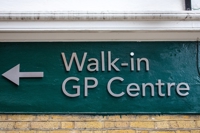
What can economists learn from mountain guides?
What do competition authorities have in common with mountain guides? They both want to avoid sudden and dangerous changes to the landscape where they operate.
A mountain guide wants their clients to enjoy a day of ski-touring in fresh snow, but also wants to keep them safe from avalanches and snowslides. Similarly, competition authorities want consumers to reap all the benefits generated by large digital platforms, but don’t want digital markets to “tip” in favour of a single provider, in the fear that this could reduce consumer welfare in the long run.
Frontier doesn’t provide advice on mountaineering and we aren’t aware of new relevant developments in the world of snow science, but the European Commission (EC) and the Competition and Markets Authority (CMA) have recently released their proposals on how to regulate competition in digital markets, with the Digital Markets Act (DMA) in the EU and Digital Markets Unit (DMU) in the UK.
As discussed in our latest bulletin on the topic, these two proposals are characterised by many differences. However, both state they are responses to the risks to consumers arising from digital markets tipping. And both raise a fundamental question for businesses, advisers and policy-makers: what factors are informative of whether markets are likely to tip?
A combination of economic theory and snow science can help us answer this question.*
- Direct and indirect network effects make markets more likely to tip. If only one person decides to ski down an empty mountain, an avalanche is unlikely to start straight away.** But if instead they choose to ski down a mountain that already has been skied by hundreds of skiers, then that person is much more likely to trigger an avalanche. Similarly, in digital markets it is important to understand the relationship between the number of users on a platform and the extent to which this affects the ability of other firms to compete in different markets. Does each extra user on the platform improve the experience of other users and make it harder for rival platforms to offer as attractive an option? If so, then these network effects can make tipping more likely. Does each additional user benefit all existing users or only a subset of them? And does this improvement get faster or slower as more users join? If improvements affect all users or get faster, tipping is more likely. If improvements affect a subset of users, or demonstrate diminishing marginal returns, tipping is less likely.
- Differentiation can decrease the likelihood of tipping, but not always. If skiers choose different routes and different styles of skiing, then avalanches are less likely than if every skier decides to take the same path at the same speed and the same rhythm. Likewise, most markets are less likely to tip if there is greater differentiation in the products or services on offer. However, that’s not the end of the story - the type of differentiation matters. Sometimes certain people prefer some ski routes or products whilst others prefer different options (this is called “horizontal differentiation”). For example, different users, or even the same users in different contexts, will be interested in different ways to network with their social circles. In these situations, people end up choosing different options and tipping to one option is less likely. Conversely, in other situations, every skier (consumer) prefers the same route (or product) if all are the same price (this is called “vertical differentiation”). For example, search users generally want to be able to search for something online and get accurate answers, and will prefer the service that does this best. If these products cannot or do not vary their price (for instance, because they are free), then this sort of differentiation makes tipping more likely - if there are lots of different routes down a mountain but everyone chooses the same famous descent, an avalanche may still be likely.
- Multi-homing makes markets less likely to tip. Ski passes can be expensive. If a pass only lets a skier go down one slope, then they may not seek out other slopes rather than buying another pass, leading to greater use of that existing slope and so a greater prospect of avalanches. However, if there are no barriers to stop skiers from exploring all the different slopes on a mountain, skiers will disperse, and so an avalanche will be less likely. Similarly, in a market where users can easily spread their time across a variety of platforms (“multi-homing”), tipping is less likely than in a market where each user sticks to one platform.
These three factors loosely map to the six factors suggested by the Commission in the DMA proposal (lock-in, scale, multi-sidedness, vertical integration, network effects, multi-homing). In this context, product differentiation is of particular importance when assessing and analysing market tipping. There are many markets which would meet at least the criteria of lock-in, scale, multi-sidedness, and network effects - and yet haven’t tipped. (For instance, price comparison websites often exhibit all these features, but there are typically several firms in this space). Why? Most likely because these firms can (horizontally) differentiate their offers which, in turn, leads to multi-homing.
Either way, mountain guides can provide one final lesson to economists, regulators, and policy-makers.
There is no one-size-fits-all approach – you need to understand the market first. Every mountain and every day is different: in order to predict an avalanche, mountain guides need to look at the weather in the past weeks, the temperatures overnight, the angle of the mountain relative to the sun, humidity, and a variety of other variables. In the same way, economists and regulators can’t just look at network effects, multi-sidedness and multi-homing to judge whether a market will tip. They need to thoroughly understand the fundamentals of the market. What are the firms’ business plans? What are their specific monetisation mechanisms? How do they compete? How differentiated are they? What are the barriers to entry? What is the history of the market? Brush up on all of these, and you’ll have a better chance of predicting an avalanche.
*Frontier Economics are specialist economic consultants with expertise in competition and regulatory matters. This article does not constitute advice on mountaineering, mountain guiding, snow science or skiing. Please only listen to our advice about economics.
**Again, remember our disclaimer above. Avalanches are dangerous.






